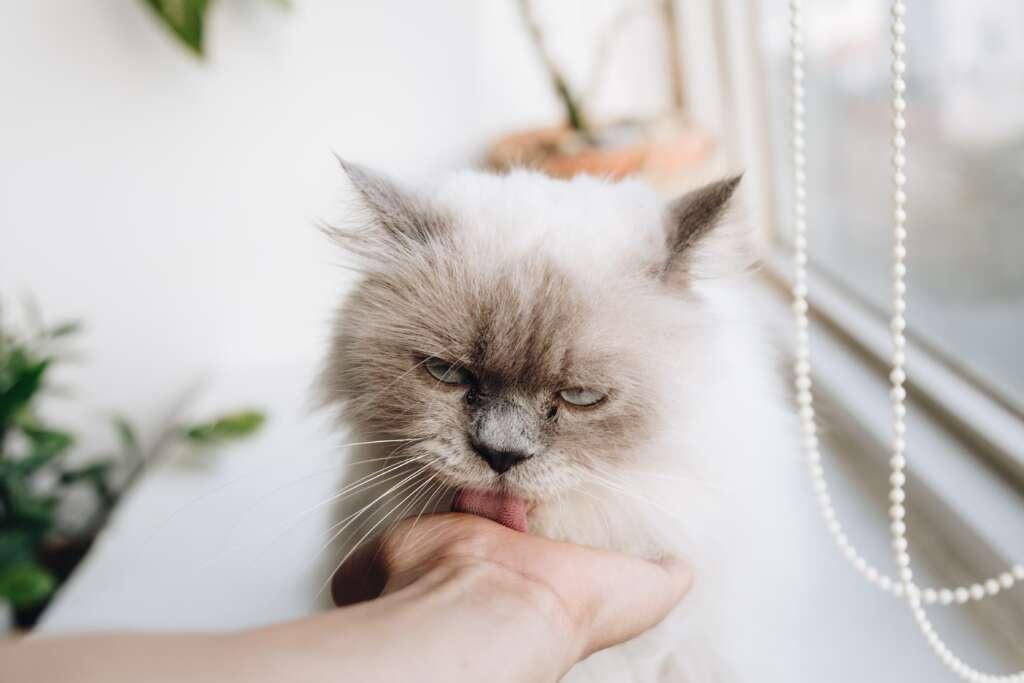
If you see your male cat straining repeatedly in or outside the litterbox to pass urine, and nothing, or not much urine comes out, he could have a bladder tube obstruction. This is a serious life threatening emergency. Call us right away.
What to do if your cat passes urine outside of the litterbox?
Cats passing urine outside the litterbox is an issue that many cat owners face. This behavior can be frustrating and concerning. However, it’s essential to recognize that there are many different underlying reasons behind this behavior. With the right approach, it can be addressed effectively. Some of these reasons are very serious, so it is important to get this problem diagnosed properly. Let’s explore some of the reasons this may happen and provide practical solutions to help resolve the issue.
Steps to solve:
The first step is to figure out which cat is doing the out of box urination. If you only have one cat the problem is easily solved. Most urinating-out-of-the-box problems (UOOTB) happen in multiple cat households. The more cats you have, the more likely you will have this problem.
The next step is to determine if your cat is urinating or spraying. Spraying is a normal cat behaviour. Typically in unneutered male cats over 1 year of age, but it can happen in all cats. The purpose is to mark their territory. There are 2 ways to differentiate spraying from UOOTB. The first is to evaluate where the urine is. If it is several inches above the ground on a vertical surface , it is probably spraying. If it a puddle on a horizontal surface, it is probably UOOTB.
The second method to tell these two problems apart is to see the cat “in the act.” If the cat is spraying, they will back up to a vertical surface, lift their tail up tall and proud, and wiggle their tail as a small amount of urine may be sprayed out. Remember, spraying is normal cat behaviour to mark their territory, and 100% of intact (unneutered male) cats over 1 year of age will do this. So if you have any unneutered cats in your house, get them neutered! If your cat is already fixed, then the spraying kitty will need some medication. Some changes in your cats lifestyle may help, such as letting them outside.
Alternatively, if you watch your kitty and they squat down somewhere in your home, with their rear end low to the ground, and some liquid passes out, then this is urinating-out-of-the-box. This can be a complex problem that takes some work to solve.
REASONS FOR UOOTB
- Medical Conditions: Cats may urinate outside the litterbox due to medical conditions such as imminent bladder obstruction, Diabetes Mellitus, kidney insufficiency, urinary tract infections, bladder stones, or feline lower urinary tract disease. It is crucial to rule out any underlying health issues, so call us if you suspect your cat is urinating outside the box.
- Litterbox Issues: Cats have preferences when it comes to their litterbox. They may avoid using it if they find it dirty, if the litter is uncomfortable on their paws, or if it is located in an inconvenient or stressful area. Some cats develop a preference for urinating in certain places such as laundry baskets, sparts bags, and children’s school bags.
- Stress and Anxiety: Cats are emotionally sensitive, and they can react to changes in their environment or routine with stress and anxiety. Factors such as new additions to the family, moving to a new home, or the presence of other animals can trigger inappropriate urination. If you have one cat bullying another (and this is a common problem) your urinating cat may need some time separated from other cats to solve this problem. We also have medications that help with this problem.
How to deal with a cat urinating out of the box
- The first step is to call us to arrange an appointment to look for any underlying medical conditions. We will conduct a thorough examination and examine the urine. If the urine is normal, then it is more likely that we are dealing with an emotional/ stress/aversion/ preference issue. If the urine is abnormal, then more testing will determine the necessary treatment.
- Provide an Ideal Litterbox Environment: Ensure that you have an adequate number of litterboxes in your home, with the general rule being one box per cat plus one extra. Place the,itterboxes in quiet, easily accessible areas and keep them clean by scooping daily and performing regular deep cleanings. Experiment with different types of litter to find the one your cat prefers.
- Reduce Stressors: Minimize any potential stressors in your cat’s environment. Maintain a consistent routine, provide hiding spots and vertical spaces, and offer interactive toys and regular playtime to keep your cat mentally and physically stimulated.
- Use Positive Reinforcement: When your cat uses the litterbox appropriately, reward them with praise, treats, or playtime. Positive reinforcement encourages our desired behavior to continue using the litterbox.
Urinating out of the box is a serious problem with many causes. We can resolve it together by understanding the underlying reasons and taking appropriate steps to address them. Make an appointment with us today. We can help in this process.
